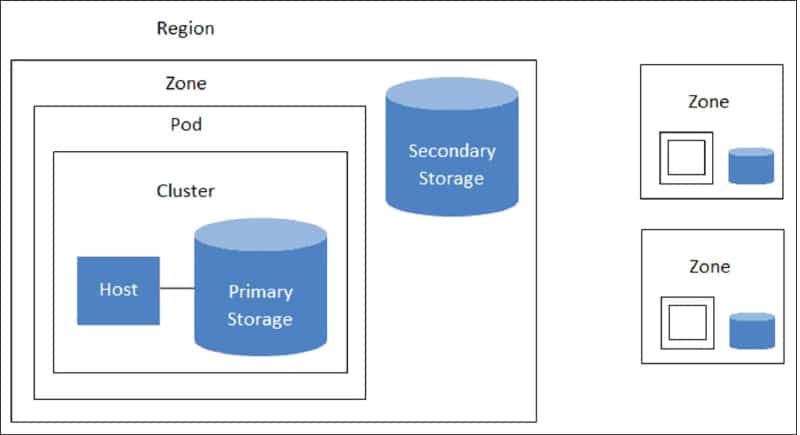With its comprehensive feature set, flexible architecture, and strong community support, CloudStack is an attractive option for organisations looking to harness the full potential of cloud computing.
Apache CloudStack is a comprehensive, open source cloud computing platform that provides a complete solution for creating, managing, and deploying scalable infrastructure as a service (IaaS) clouds. Developed by the Apache Software Foundation, CloudStack is designed to operate as an efficient and user-friendly cloud orchestration platform that can handle large networks of virtual machines. It is utilised by a variety of service providers to offer public cloud services, as well as by numerous businesses for on-premises private clouds or as part of a hybrid cloud solution.
History and evolution
The journey of CloudStack began with a company called Cloud.com, which was later acquired by Citrix Systems in 2011. Recognising the potential of CloudStack to drive the future of cloud computing, Citrix contributed the project to the Apache Software Foundation. This move was aimed at leveraging the collaborative power of the open source community to further develop and enhance CloudStack. It became a top-level Apache project in 2013 and has since been nurtured by a diverse and active community of individual developers and corporate contributors.
Core features and functionalities
Apache CloudStack is packed with a multitude of features that cater to the essential requirements of cloud computing for both public and private cloud scenarios. Its robust capabilities include:
Compute orchestration: CloudStack efficiently manages the deployment of virtual machines across various compute resources, ensuring optimal utilisation of the infrastructure.
Network as a service (NaaS): It provides a suite of networking services, including load balancing, VPN setups, and firewall configurations, to maintain accessibility and security for cloud-hosted applications.
User and account management: With comprehensive account management features, CloudStack offers granular access controls, enabling the creation and management of users, projects, and domains.
Resource accounting: The platform includes an integrated resource accounting system that tracks the consumption of cloud resources, which is crucial for billing and chargeback mechanisms.
API compatibility: CloudStack features an API that is compatible with AWS EC2 and S3, facilitating the deployment of hybrid clouds that can interact with Amazon’s cloud services.
High availability: The platform ensures high availability for virtual machines, reducing the risk of service interruptions due to hardware failures.
User interface: CloudStack includes an intuitive web interface that simplifies the management and configuration of cloud services for both administrators and end-users.

Architectural overview
Designed for scalability and fault tolerance, the architecture of Apache CloudStack consists of several integral components.
Management server: This central component oversees the entire cloud infrastructure, managing resource allocation and network configurations, and providing API endpoints.
Agent: Each host within the CloudStack environment runs an agent that facilitates communication with the management server, manages virtual machines, and reports on resource usage.
Database: CloudStack relies on a MySQL database to store persistent information about the cloud’s state, configurations, and user data.
Primary storage: This storage layer houses the disk volumes for virtual machines and is typically implemented using SAN or shared NFS storage solutions.
Secondary storage: This is where VM templates, ISO images, and disk volume snapshots are stored, which are essential for provisioning and managing virtual machines.
Deployment scenarios and use cases
Apache CloudStack’s versatility allows it to be deployed on various hypervisor platforms, including VMware, KVM, XenServer, and Hyper-V. It is adept at handling a range of cloud computing use cases.
Public cloud services: Cloud service providers leverage CloudStack to offer robust cloud services to their customers, competing with major players in the market.
Private clouds: Large enterprises and organisations deploy CloudStack to create private clouds that provide a controlled and secure environment for their internal operations.
Hybrid clouds: By integrating on-premises infrastructure with public cloud services, organisations use CloudStack to establish hybrid clouds that offer flexibility and scalability.
Community engagement and ecosystem
The Apache CloudStack project benefits from a vibrant and engaged community that actively contributes to its ongoing development and provides support to its user base. The project maintains various channels for collaboration, including mailing lists, a wiki, and a bug tracker. The ecosystem around CloudStack is further enriched by a plethora of third-party tools and integrations that extend its capabilities and integrate with other software and services.
Future prospects and strategic importance
As cloud computing continues to dominate the IT landscape, platforms like Apache CloudStack play a pivotal role in shaping the future of how businesses deploy and manage their IT resources. The open source model of CloudStack encourages innovation and ensures that the platform remains at the cutting edge of technology trends. With its strong feature set, active community, and commitment to open standards, CloudStack is well-positioned to meet the evolving needs of the industry.
Apache CloudStack stands as a testament to the power of open source collaboration in driving technological advancement. Whether it’s for deploying public, private, or hybrid clouds, CloudStack offers a reliable, scalable, and user-friendly platform that can cater to a wide array of cloud computing requirements. As the cloud computing market continues to grow, Apache CloudStack is poised to remain a significant player in the realm of cloud infrastructure services.










































































